Wounds self-care management
It is a government priority. The National Wound Care Strategy Programme (2019) in the UK has actively promoted self-care for wound management, particularly for venous leg ulcers and other chronic wounds.
The NHS Long Term Plan (2019) and the 10 year health plan for England (2025) emphasizes supporting patients in being more active in their own care, including wound care, through good self-care and personalized care approaches. Making sure patients have the right knowledge, skills and support to achieve this.
Is your patient able to self manage?
For patients with chronic wounds, it is crucial, now more than ever, that they engage in their care. Self-care can offer a means to maintain or even improve the capacity to live well over time.
Patients need to be:
- willing
- health literate
- at the centre of your decision making and care delivery
- supported
- Physical and mental ability:
- Can the patient physically reach the wound to manage dressing changes? Can they understand their treatment and care?
- Are they mentally and physically able to self-care?
Will they be able to monitor for signs of infection?
- Support and situation:
- Are they dependent on carers or family for care delivery?
- Are there financial constraints which might form a barrier?
- Motivation:
- Do they understand why self-care will help them?
Are they willing and ready to carry out self-care? - Have they had any negative experiences in the past which might influence how well they cope?
- Do they understand why self-care will help them?
Promoting self-care can empower patients and reduce nursing workloads. Patients should never feel abandoned but should have support available as needed.
Caring for you own wound at home and how to change a dressing
It is important to prevent and recognise infection.
You will need:
- dressing pack, which will include gauze, gloves, tray, apron and waste bag
- wound dressings provided by nursing staff
- scissors cleaned prior to use
- creams and barrier creams for surrounding skin if required
- tape if required
- running tap water to clean the wound and surrounding skin
Useful information
What to do
What to do
- Wash hands thoroughly especially between fingers and palms of hands like the step-by-step guide below:
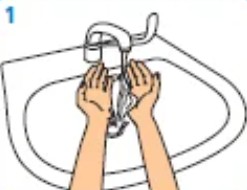
Wet hand with water
Apply enough soap to cover all hand surfaces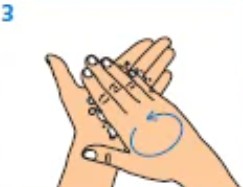
Rub hands palm to palm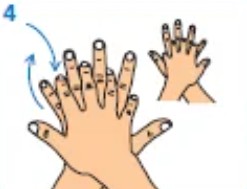 Rub back of each hand with the palm of the other hand with fingers interlaced
Rub back of each hand with the palm of the other hand with fingers interlaced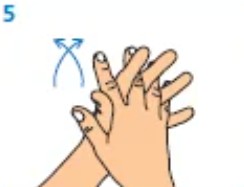 Rub palm to palm with fingers interlaced
Rub palm to palm with fingers interlaced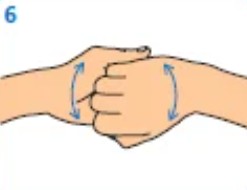 Rub with back of fingers to opposing palms with fingers interlocked
Rub with back of fingers to opposing palms with fingers interlocked Rub each thumb clasped in opposite hand using a rotational movement
Rub each thumb clasped in opposite hand using a rotational movement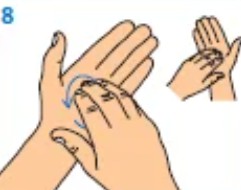 Rub tips of fingers in opposite palm in a circular motion
Rub tips of fingers in opposite palm in a circular motion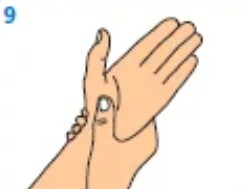 Rub each wrist with opposite hand
Rub each wrist with opposite hand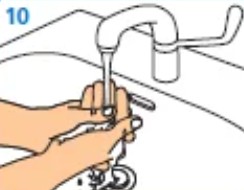 Rinse hand with water
Rinse hand with water Use elbow to turn tap off>
Use elbow to turn tap off>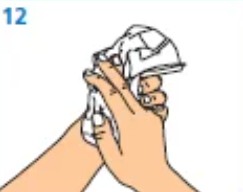 Dry thoroughly with single use towel
Dry thoroughly with single use towel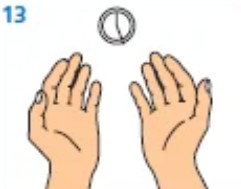 Hand washing should take 15 to 30 minutes
Hand washing should take 15 to 30 minutes
- Dry your hands with a clean towel or kitchen roll
- Open dressing pack and put on the apron provided
- Remove waste bag for dirty dressings
- Open new wound dressings and drop into clean opened dressing pack
- Remove dressing without touching the inside of the dirty dressing or the wound bed, you might have to wet dressing with tap water if dressing is stuck to wound, do not pull if stuck as this will damage the healing wound
- Place dirty dressing into the bag provided
- Wash hands again
- Apply clean gloves from sterile pack
- Clean the wound bed by gently wiping to remove any wound residue and then surrounding skin with tap water and gauze from dressing pack
- Ensure that you clean the wound before the surrounding skin and use a new piece of gauze for the surrounding skin
- Dependent upon the location of the wound it may be more appropriate to shower which will ensure that the wound bed and surrounding skin are clean prior to dressing
Monitor for signs of infection
Monitor for signs of infection
Observe if or for:
- redness to skin surrounding wound
- skin surrounding wound is warmer than normal
- wound has become painful
- swelling and hardening
- increased wetness from wound
- offensive smell
- yellow or green pus
- If wound deteriorates or gets larger or deeper
- high temperature (fever)
- feeling generally unwell
If the infection spreads further, the redness will keep spreading to more areas of skin and you may begin to feel unwell.
If you suspect a wound infection, please contact your GP practice or health professional.
For our of hours contact 111.


